Kalu Waterfall stands as the highest (approximately 1,200 feet) and largest waterfall in the Malshej region, named after the Kalu River. This majestic waterfall is partially visible from the main road in Malshej, making it a prominent landmark in the area. However, only about 10% to 12% of the waterfall can be seen from the road, with the remaining 80% to 90% hidden behind the mountains. This partial view adds an element of mystery and allure, offering a unique experience for those who venture closer to discover its full scale.
The goddess Kalubai, whose temple is situated at the top of Malshej near the river’s source, is believed to bless the region with the magnificent Kalu Waterfall. Local lore suggests that the waterfall is a divine gift from Kalubai, embodying her grace and power. The name “Kalu” is thought to be derived from the goddess’s name, making the waterfall not only a natural wonder but also a place of spiritual significance for those who visit.
Originating from the Harishchandragad mountains, Kalu Waterfall flows through Khireshwar village, cascading dramatically from the Deccan plateau down to the Konkan region. Nearby, there is another waterfall known locally as Mahuli Waterfall, which becomes visible at the end of the trek. Together, Kalu Waterfall and Mahuli Waterfall converge into Kalu River.
Best Time to Visit
The trek to Kalu Waterfall is considered easy when visited at the end of the monsoon season, typically between September and October. However, it is advisable to avoid visiting during the peak monsoon months, as the waterfall can become dangerously powerful. Additionally, it is important not to venture to the end of the trek if it starts raining during your visit to Kalu Waterfall. The waterfall usually dries up completely during the summer months, making post-monsoon the ideal time to witness its full glory.
First Encounter
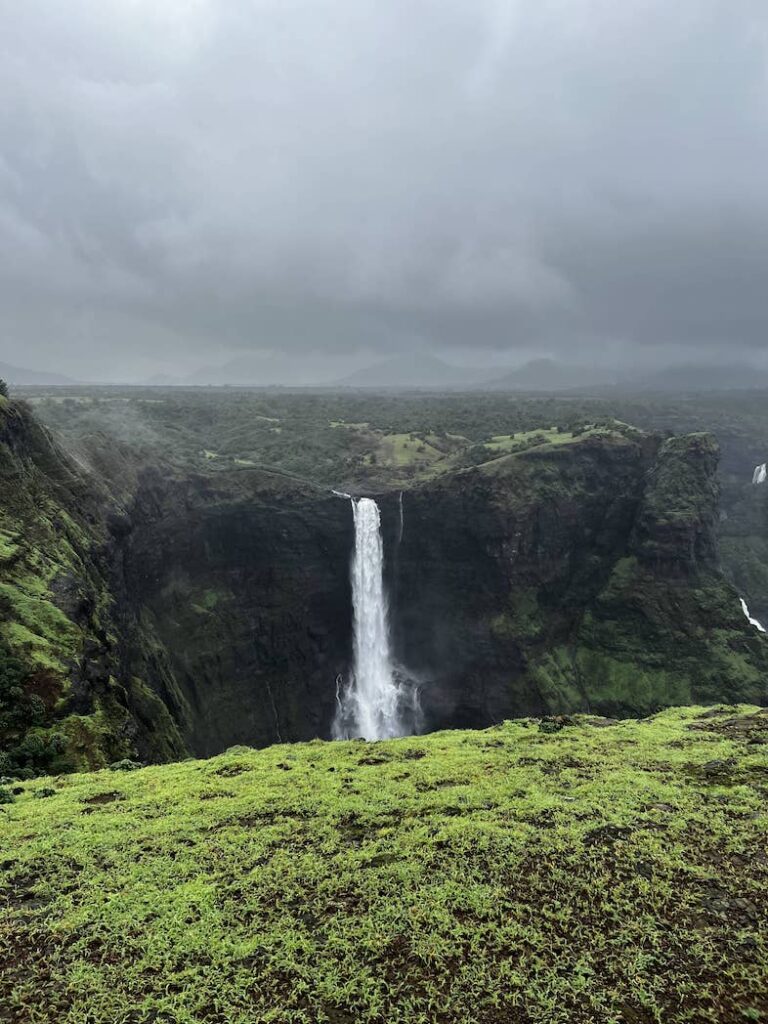
I first caught sight of Kalu Waterfall from another mountain during my trek on the Aadrai Jungle Trail in July 2022. The view of the cascading waterfall from Aadrai was truly breathtaking, and I knew I had to visit Kalu Waterfall up close someday. So, when my trekking group planned a trek to Kalu, I immediately enrolled for the adventure scheduled for August 10th.
The Trek Plan
The trek was well organized by our friends and coordinators, Bhavesh and Paresh (PC). They also planned to include a trek to the nearby Twin Forts, which was just an hour away. However, due to traffic and weather conditions, we were only able to cover Kalu Waterfall.
The Day of the Trek
We met at our usual assembly point at 5:30 am and began our journey from Malad to the base village, Thibti. After a drive of about four and a half hours, we reached the village at around 10:00 am and began our trek to Kalu Waterfall.
While the trek is generally straightforward, the rain made it slightly more challenging for our group. We ensured that everyone stayed together and carried a rope in case we needed to cross any rivers along the way.
Crossing the Kalu River
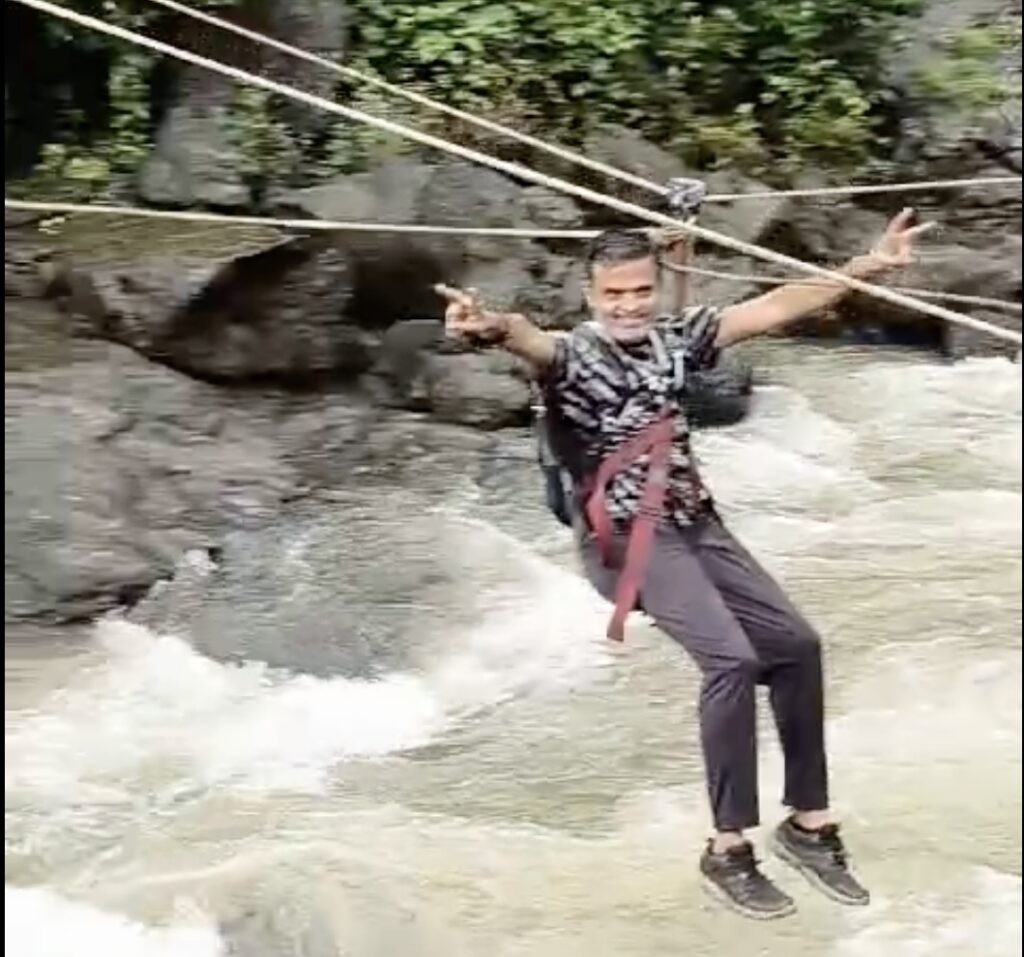
At one point, we needed to cross the Kalu River. However, it’s important to note that this crossing is only feasible from September onwards when the river’s flow is manageable. During our visit, the currents were still quite strong. Fortunately, a few locals had installed a zipline crossing, available at a very nominal rate. As a group of 15 trekkers, we decided to use their zipline service to safely reach the other side of the river. They issued us tokens that could be used for the return journey as well.
The Majestic View
We reached the end of the trek at around 1:00 pm, where we finally stood at the base of Kalu Waterfall. The sight before us was nothing short of breathtaking. The sheer force of the water cascading down from such great heights created a misty veil, enveloping the surrounding landscape in a magical aura. The sound of the roaring water combined with the lush greenery all around made for an incredibly mesmerising experience.
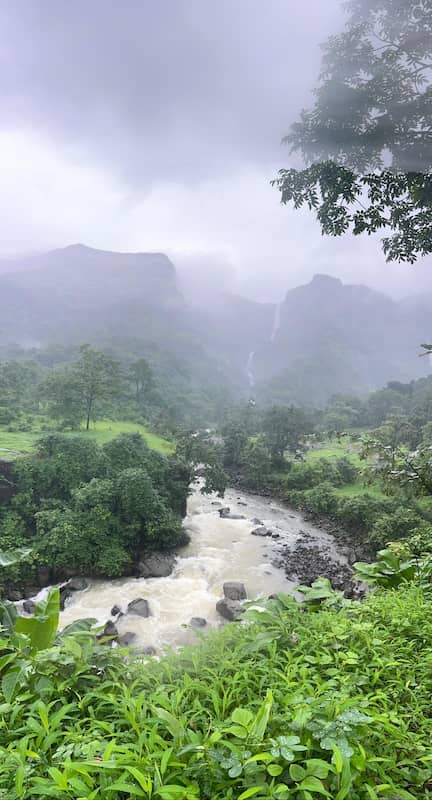
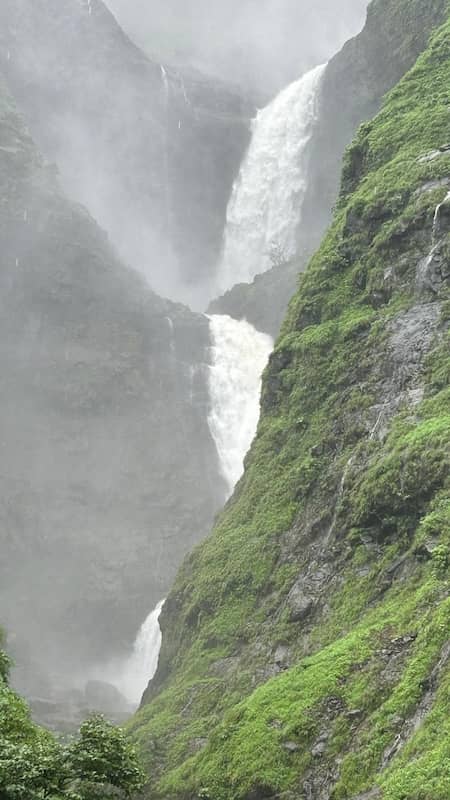
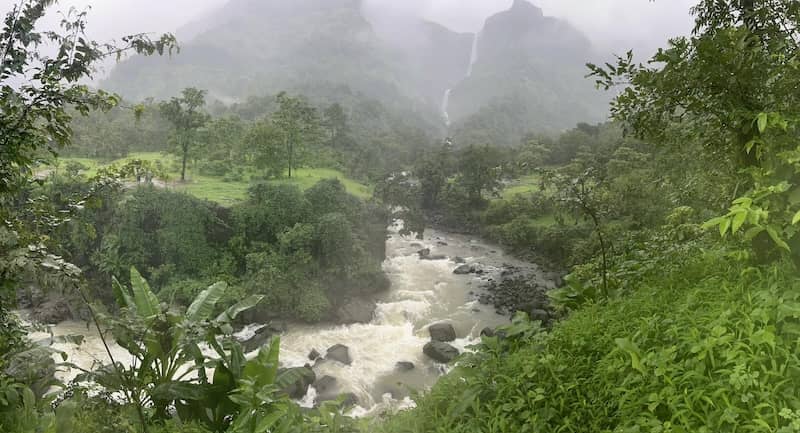
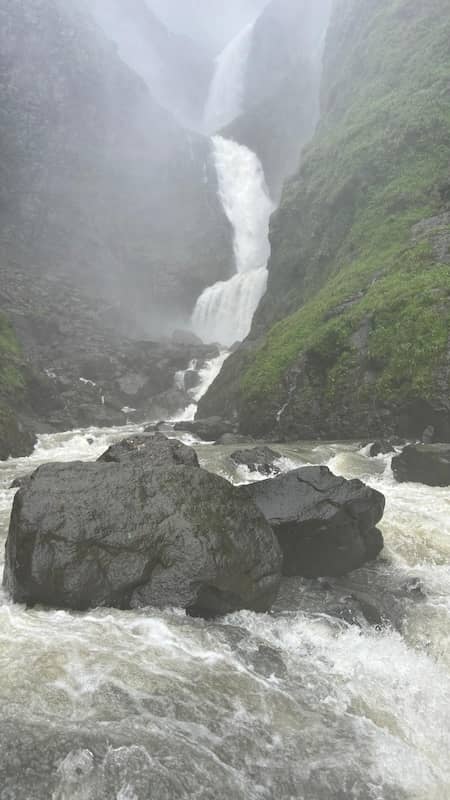
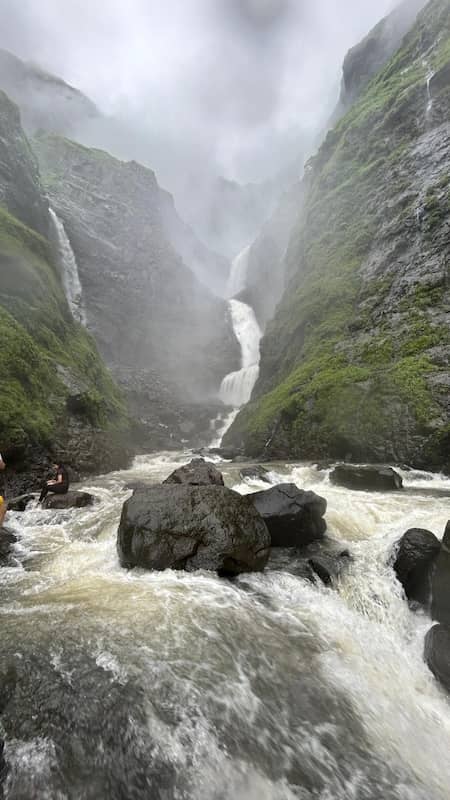
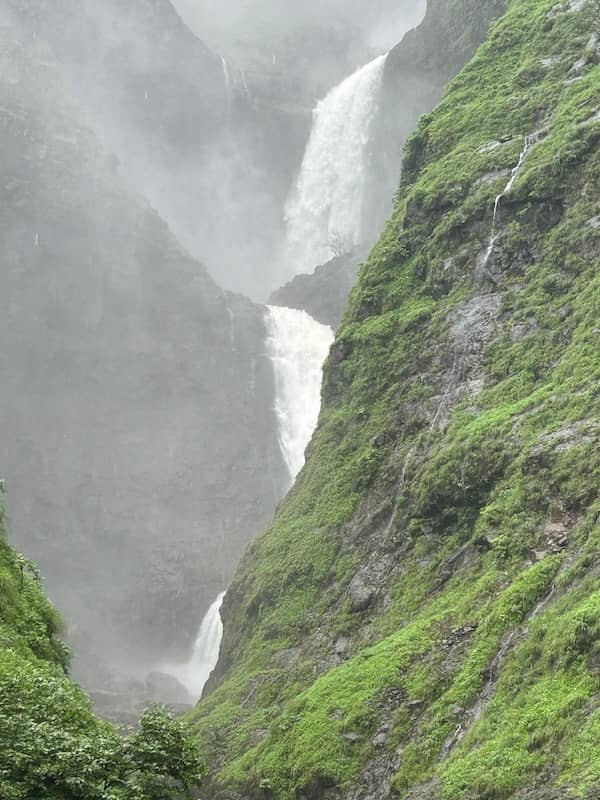
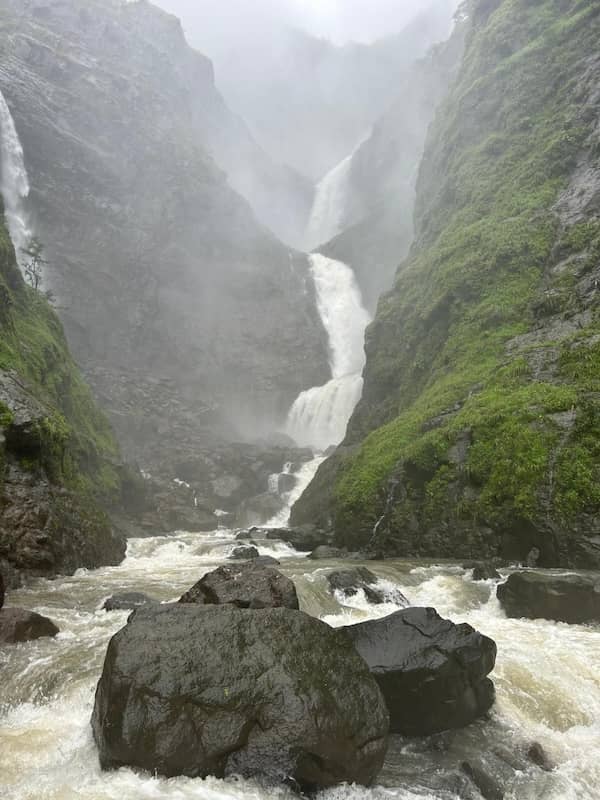
Kalu Waterfall descends in five distinct stages, each adding to its grandeur. However, not all five stages are visible at once; only skilled rappellers have the privilege of witnessing the waterfall in its entirety. The height of the waterfall rappelling is about 1,200 feet, offering an unparalleled adventure for those daring enough to take on the challenge.
As we stood there, taking in the beauty of Kalu Waterfall, we also noticed Mahuli Waterfall cascading gracefully on the opposite side. The two waterfalls, in harmony with the dense forest and rugged terrain, created a panoramic view that was both serene and awe-inspiring. The surrounding cliffs and greenery added to the grandeur, making it a sight we won’t soon forget.
Final Thoughts on Kalu Waterfall
Kalu Waterfall is more than just a natural wonder; it’s a hidden gem tucked away in the Malshej region, offering a perfect blend of adventure and tranquility. Whether you’re a seasoned trekker or a nature enthusiast, the journey to Kalu Waterfall rewards you with stunning views, a sense of accomplishment, and the serenity that only nature can provide. The sight of the waterfall cascading down in multiple stages, coupled with the lush surroundings and the gentle roar of the water, creates an unforgettable experience.
As you stand at the base of this magnificent waterfall, you realize that the trek was worth every step. If you’re looking for an escape into nature, away from the hustle and bustle of city life, Kalu Waterfall is the destination to seek.
How to Reach Kalu Waterfall
Kalu Waterfall is located approximately 125 kilometers from Mumbai. You can drive directly to the base village, Thibti, from where you’ll need to trek for about 5 to 7 kilometers to reach the waterfall. Local villagers are often available to assist if you have any questions or need guidance.
Alternatively, you can reach the waterfall using local transport. The nearest railway station is Kalyan. From Kalyan, catch a bus heading towards Malshej Ghat and get off at the Kalu Waterfall Entry Point. From there, it’s a 2.2-kilometer walk to Thibti Base Village, which marks the start of the trek to Kalu Waterfall. If you have a two-wheeler, you can off-road for an additional 2.6 kilometers to get closer to the waterfall.
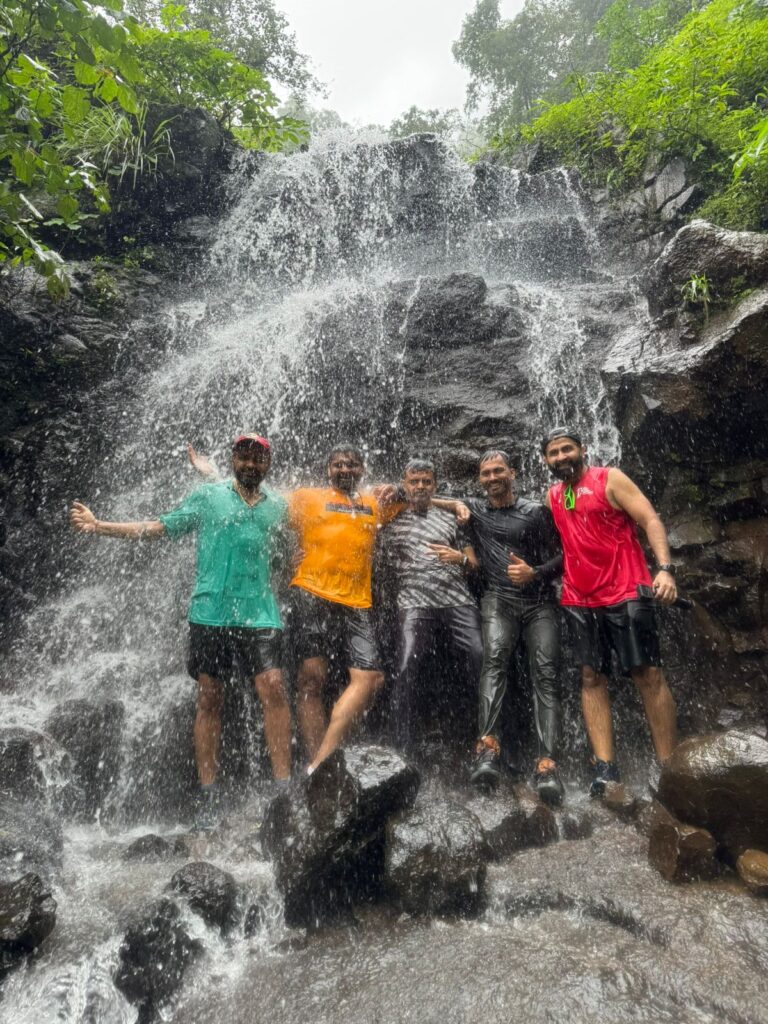
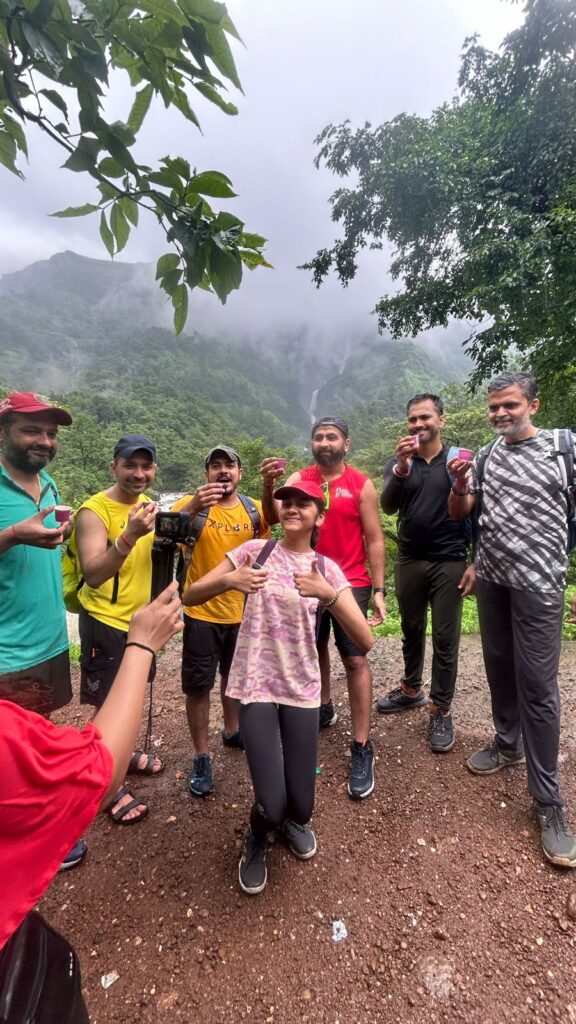
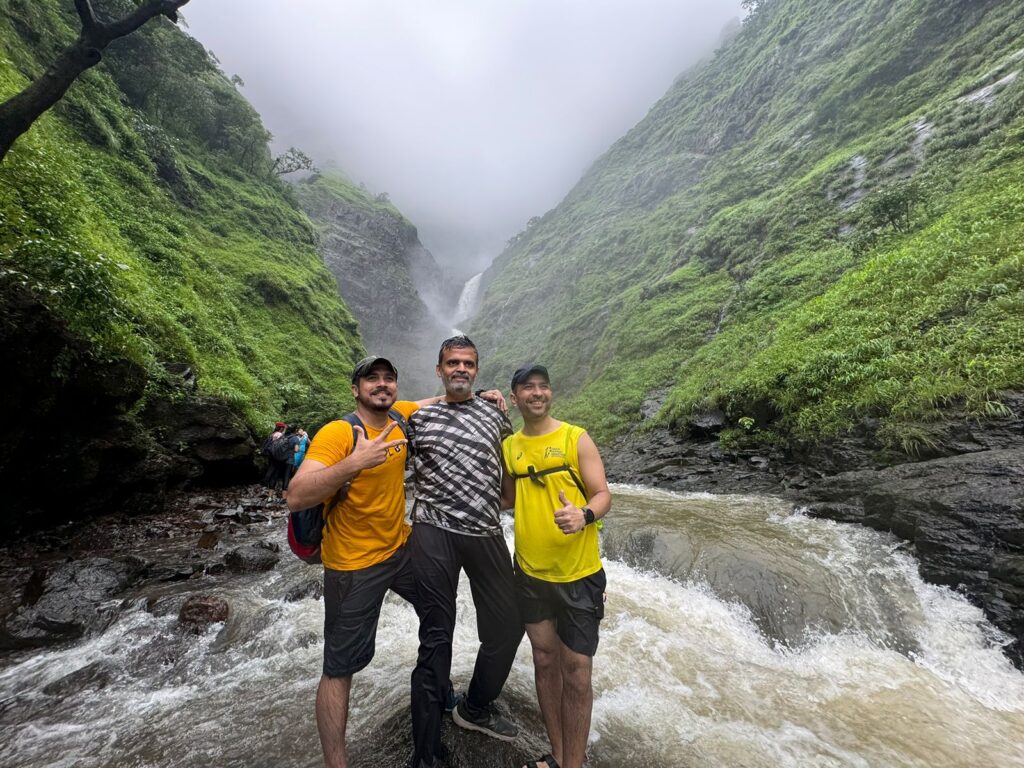
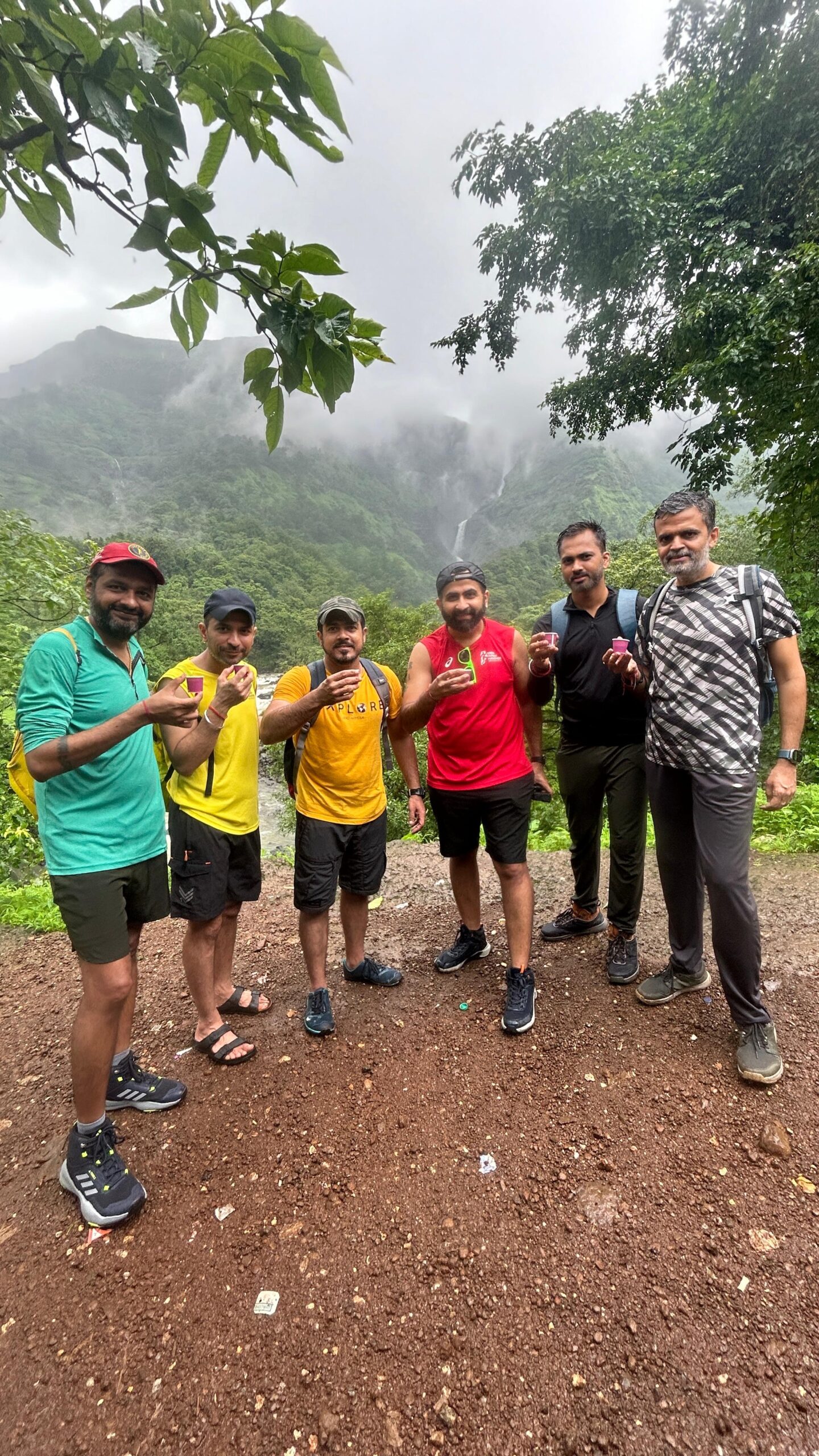
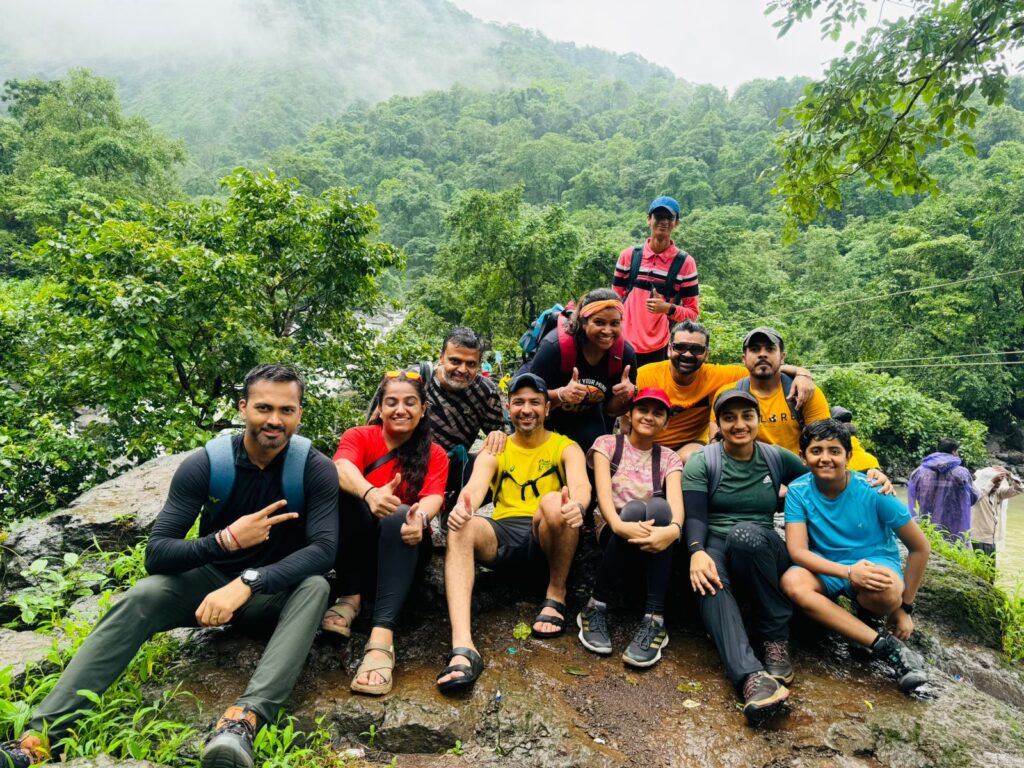
FAQ
Where is Kalu Waterfall located?
Kalu Waterfall is located in the Malshej region, approximately 125 kilometers from Mumbai. The waterfall originates from the Harishchandragad mountains and flows through Khireshwar village, eventually cascading down into the Konkan region.
How can I reach Kalu Waterfall?
You can reach Kalu Waterfall by driving directly to the base village, Thibti, and then trekking for about 5 to 7 kilometers. Alternatively, you can take a bus from Kalyan Railway Station towards Malshej Ghat and get off at the Kalu Waterfall Entry Point, followed by a 2.2-kilometer walk to Thibti Base Village.
When is the best time to visit Kalu Waterfall?
The best time to visit Kalu Waterfall is at the end of the monsoon season, between September and October. The waterfall is at its fullest during this period, offering spectacular views. It is advisable to avoid visiting during peak monsoon months due to the dangerous water flow.
Is the trek to Kalu Waterfall difficult?
The trek to Kalu Waterfall is considered easy to moderate. However, the trail can become slippery and challenging during or after rain. It’s important to stay in a group and carry necessary safety equipment, especially when crossing rivers.
Can I see the entire waterfall during my visit?
No, only about 10% to 12% of Kalu Waterfall is visible from the road. The waterfall descends in five stages, and not all stages are visible from the base. Only experienced rappellers can see the waterfall in its entirety.
What safety precautions should I take during the trek?
It is crucial to avoid visiting during heavy rainfall and to be cautious while crossing rivers, as currents can be strong. Using local services like the zipline for river crossings is advisable. Additionally, do not venture to the end of the trek if it starts raining, as the terrain can become hazardous.
Are there any facilities available at Kalu Waterfall?
Basic facilities may be available, such as guidance from local villagers and zipline services for river crossing and here are small stools at the start of trek. However, it is recommended to carry your own food, water, and first aid supplies.
Can I visit Kalu Waterfall during the summer?
Kalu Waterfall usually dries up completely during the summer months, making it less ideal for a visit. The best time to experience the waterfall’s grandeur is during the post-monsoon season.
What other attractions can I explore near Kalu Waterfall?
Malshej Ghat
Harishchandragad Trek
Sindola Fort
Pimpolgaon Joga Dam
Is Kalu Waterfall suitable for a family trip?
Yes, Kalu Waterfall can be a great destination for a family trip, especially for those who enjoy trekking and nature. However, due to the moderate difficulty of the trek, it’s important to assess the physical fitness and comfort level of all family members before embarking on the journey.

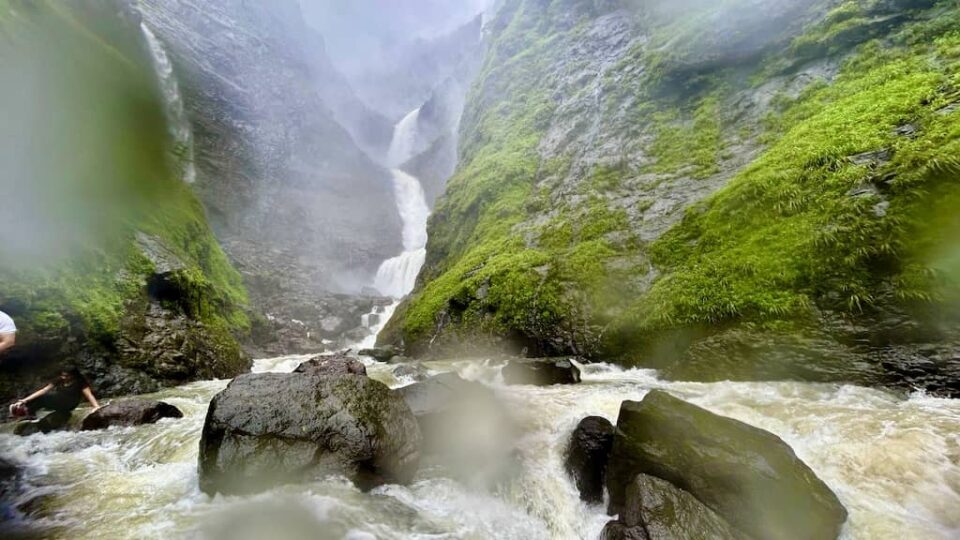
1 comment
Amazing trek details with all the queries.. nice blog